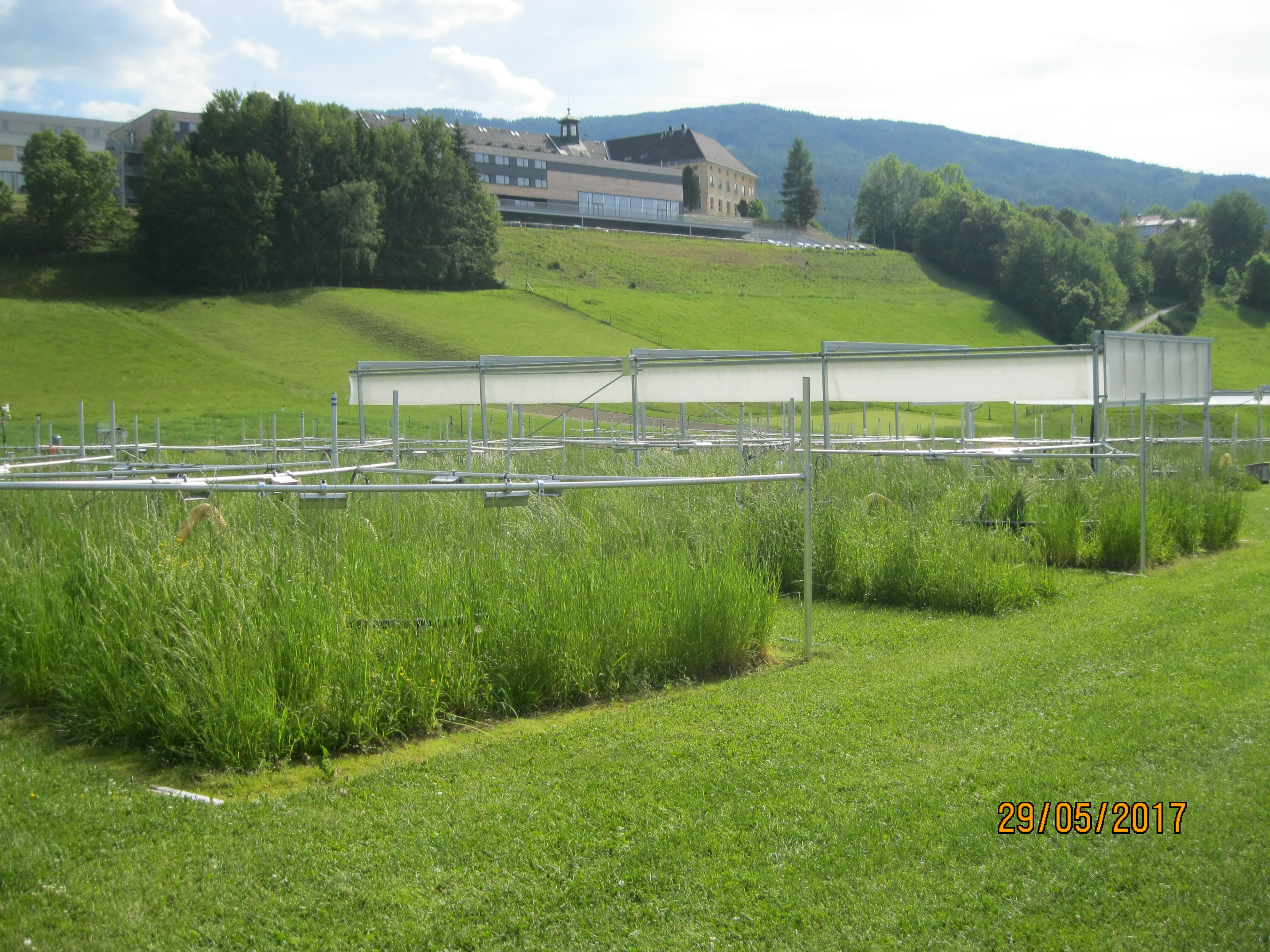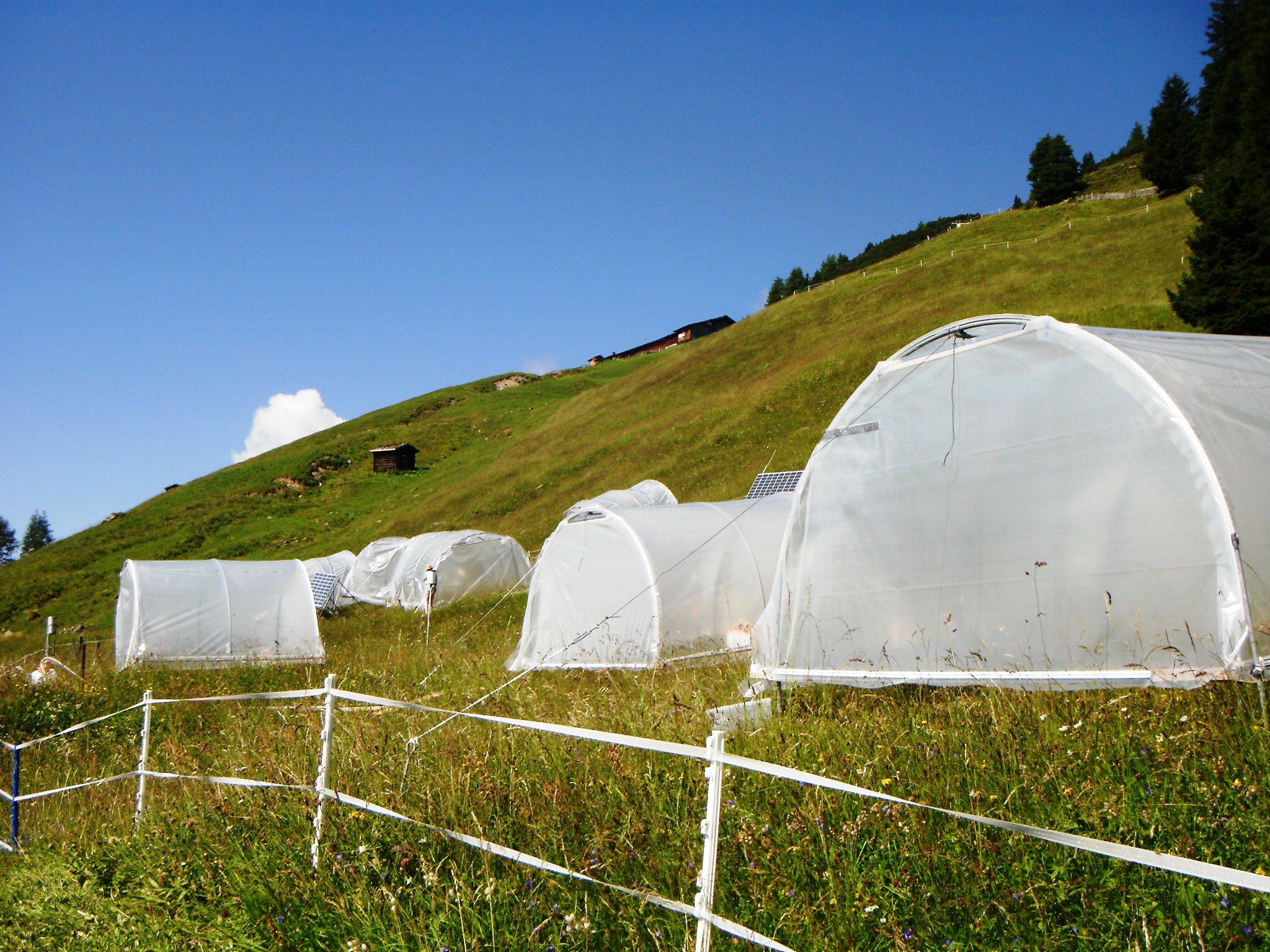Research
Overview
My current work lays at the interface between microbial ecology and soil biogeochemistry. I integrate classic soil science techniques and stable isotopes with cutting-the-edge molecular tools in order to investigate the role of soil microbes in determining the cycling of key elements for terrestrial ecosystem, with a key focus on carbon and nitrogen. I am particularly focused on extreme events, especially drought, for a number of different reasons. Drought are predicted to increase globally and significantly shape ecological communities.Stress events refer to environmental conditions that deviate considerably from the ecological optimum and significantly impair species’ performance or functions. Understanding how ecosystems respond to ecological stressors in space and time is a fundamental tenet in ecology and evolutionary biology. My research also investigate other climate change factors and environmental stress, such as nutrient deficiency.

Picture of field sites manipulating drought events
Why soil and soil microbes?
Soil has the highest biodiversity on earth and is a huge reservoir of terrestrial carbon, holding an estimated 1500 GT of organic matter to 1 m depth worldwide. Any reduction in soil carbon stocks due to climate change can introduce strong positive feedbacks through increased CO2 emission into the atmosphere. Soil microbial communities represent a major research area in the context of climate change. They regulate important biogeochemical functions, including major carbon fluxes from/to the atmosphere and the availability of nutrients necessary for plant growth.The magnitude and direction of potential soil feedbacks to climate change depend on soil organisms. For example, both soil organic matter formation and decomposition are mediated by the growth, turnover and carbon use efficiency of soil microorganisms. The respiration by heterotrophic soil organisms is responsible for a CO2 flux of around 60 Gt C per year (around 6 times anthropogenic emissions!!!) from soils to the atmosphere, while autotrophic soil organisms are largely responsible for the production and uptake of the greenhouse gases nitrous oxide and methane. Soil organisms are thus at the very center of understanding the interaction between soil and climate change. The drought resistance of soil microbial functions depends on the composition of the respective soil microbial communities. Emerging theoretical framework suggests that in short to medium time frames (years to decades), terrestrial ecosystem processes under recurrent extreme climate disturbances are likely driven by the responses of soil microbial communities. This relates to their enormous diversity and the divergence in timescales for ecological and evolutionary adaptation of microbes compared to larger organisms to recurrent stress events. Given the implications for the global climate, studying soil microbes is at the core of global change research.

What do we do?
The main goal of my research is to understand the effect of changing environmental conditions on fundamental biogeochemical mechanisms that control the fate of important elements in terrestrial ecosystems. The majority of our work is focused on field experiments, but also in controlled settings where we investigate : i) the effects of climate change (drought, warming and elevated atmospheric CO2) on key soil microbial functions (microbial growth and activity, nutrient fluxes); ii) carbon and nutrient exchange between plant and microbe at the rhizosphere; and iii) method developments linking chemistry and microbiology.
We also collaborate on several side projects, and new ideas jump-start in the lab anytime. In the Projects tab you’ll find a list of present and past project, for which I am/was (Co)-PI or to which I participated as named collaborator. Contact me in case you are interested in having more info!
MICSO Lab – Shared Principles & Working Practices
This document outlines how we work together in the MICSO Lab. It is meant to make expectations explicit, reduce uncertainty for new members, and support a research environment that is safe, inclusive, intellectually ambitious, and humane. It is not a legal document and does not replace University of Bologna, Departmental, or national regulations. When in doubt, official rules always apply. These principles apply to everyone in the lab: students, PhD candidates, postdocs, visitors, technicians, and the PI.
Safety comes before data
No experiment, sample, deadline, or paper is worth compromising your health or the safety of others.
Follow all University of Bologna safety regulations, training requirements, and laboratory-specific procedures.
Do not perform procedures you are not trained for.
If something feels unsafe, stop and ask.
Report accidents, near-misses, or unsafe conditions promptly so we can prevent them in the future.
Fieldwork follows the same principle: preparation, risk assessment, and clear communication are mandatory.
A good lab is not one where nothing ever goes wrong, but one where people feel safe enough to speak up early.
Knowing what you know—and what you don’t
Scientific work requires humility as much as expertise.
Asking questions is a strength, not a weakness.
Guessing or improvising without understanding is discouraged.
If you are unsure about a protocol, interpretation, or decision, ask your supervisor or lab mates.
This applies equally to scientific tasks and interpersonal situations. Avoid assumptions about others’ intentions; misunderstandings are common in international, interdisciplinary environments.
How we treat each other
We aim to maintain a working environment built on respect, fairness, and mutual support.
This means:
Communicating professionally and constructively, in person and online.
Giving feedback that is specific, respectful, and aimed at improvement.
Listening actively and allowing space for different communication styles.
Avoiding gossip, exclusionary behavior, or dismissive attitudes.
Discrimination, harassment, bullying, or intimidation—of any kind—are not tolerated. This includes behavior related to gender, ethnicity, nationality, language, religion, sexual orientation, disability, career stage, or contract type.
If something makes you uncomfortable, you are encouraged to speak with Alberto or, if preferred, use official university channels.
Diversity, equity, and inclusion as scientific strengths
MICSO is an international and interdisciplinary lab. This is intentional.
We recognize that:
People bring different backgrounds, skills, and constraints.
Not everyone excels in the same areas—and that is an asset.
Career stage, language proficiency, and cultural norms influence how people participate.
Our goal is not sameness, but equitable participation. Creating space for different voices improves science.
Integrity and transparency in research
Good science relies on trust.
In practice, this means:
Keeping clear, honest, and complete lab notebooks.
Reporting mistakes openly and early.
Being transparent with data, methods, and code.
Giving credit fairly in authorship and acknowledgements.
Sharing protocols, experience, and knowledge within the lab.
Negative or unexpected results are still results. There is no place for data manipulation, selective reporting, or gatekeeping.
Our research should also be conducted responsibly with respect to ecosystems, legislation, and local collaborators.
Collaboration and mutual support
MICSO works as a collective.
Help each other during intensive experiments, deadlines, or field campaigns.
Ask for help when needed—and offer it when you can.
Over time, support should balance out, recognizing that needs vary across periods and career stages.
We celebrate successes together and treat failures as learning opportunities, not personal shortcomings.
Time, flexibility, and sustainability
We recognize that people work differently.
Lab members are generally free to organize their own schedules, in agreement with supervisors and project needs.
Clear communication and reliability are essential.
Evenings, weekends, and holidays should be respected whenever possible.
Periods of intense work should be compensated with recovery time.
Long-term productivity depends on rest, health, and life outside the lab.
Communication and planning
To work effectively together:
Check your university email regularly during working days.
Respect deadlines that affect others (e.g. shared equipment, submissions).
Manuscripts, abstracts, and proposals must be discussed with supervisors well in advance of submission.
Requests for recommendation letters or formal support require sufficient notice (typically at least one month).
Planning ahead protects everyone’s time.
Mentorship and responsibility
Mentorship is a shared responsibility.
Senior lab members are expected to support junior colleagues.
Junior members are encouraged to take ownership of their projects and learning.
Alberto’s role includes scientific guidance, career support, and ensuring a healthy lab environment—but mentorship also happens peer-to-peer.
Leading by example matters more than formal authority.
A living document
These guidelines are not fixed.
They will be:
Discussed openly within the lab,
Revised as the group grows and changes,
Adapted when new challenges arise.
If something here does not work in practice, we change it—together.

